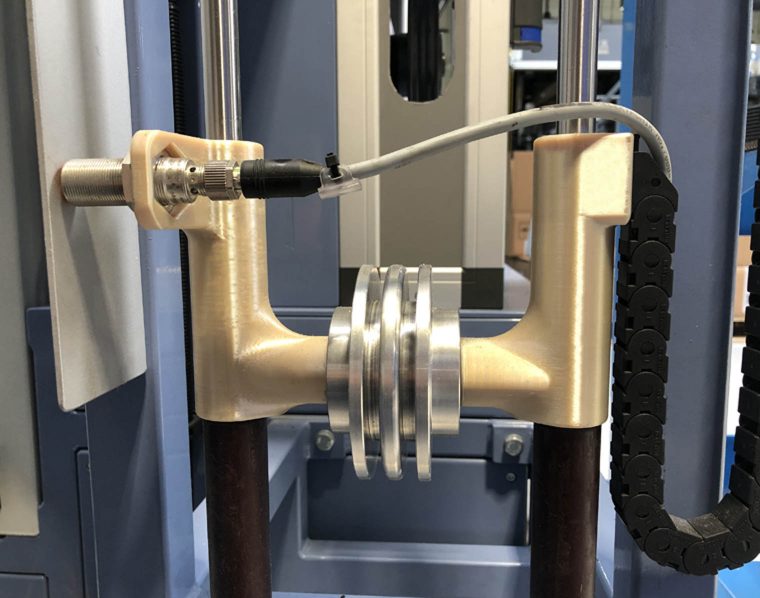Rubber sealing system company reduces lead times to days from up to six weeks
France-based, Rustin, a leader in the design, development and production of rubber sealing systems, and a company famed for having invented the cycle tyre puncture patch, is optimizing part production and experiencing impressive time and cost savings thanks to two new Stratasys FDM 3D printers – a Fortus 450mc and F370.
Housed at the company’s facility in La Chartre-sur-le-Loir, the Fortus 450mc spearheads much of the additive manufacturing production projects undertaken by the team, while the F370 provides an effective solution for functional prototyping applications and accounts for around a third of jobs handled by the company.
According to Louis Rustin, Managing Director, Rustin, the reduction in tool production lead times since using its Fortus offering has been a huge benefit for the company and meets its customers’ ever-increasing demands. The company says lead times have been reduced from five-to-six weeks down to just a few days. The company also refers to significant levels of cost-saving using additive manufacturing. It is now around 50% less expensive for the company to produce production tooling or parts with Stratasys FDM additive manufacturing compared to traditional machining. However, a reduction in cost per part par is just one element of the overall savings.
“It’s about time, operational speed and production capabilities, and with Stratasys FDM additive manufacturing we have more of each than we would with traditional machining methods,” explains Rustin. “The result of this efficiency means that our operators are effectively given more time to devote to applications like molds or dies in which traditional manufacturing is still deployed, but are nevertheless more labour intensive.”
“Collectively, leveraging our Fortus 450mc we have less machine downtime, less capital and less labour, which means we can redistribute manpower elsewhere,” says Rustin. “The push-and-play element of the technology means that once a print job has been set to run, the operator can do something else. That’s a hidden, but also very obvious advantage that is extremely important to us as a company as it increases our overall performance, reactiveness and ability to serve our customers more quickly.”
Crisis averted for Alstom
That speed was critical when the production line failed at rail equipment OEM Alstom. The company sent an emergency parts request to Rustin to get back up and running after the failure of an engine air duct. Rustin paired thermal isolation material and a silicon sleeve with 3D-printed end connectors created on the Fortus 450mc in ULTEM 9085 resin to create right-angled joints to replace the non-functioning duct. Instead of being out of production for weeks, the production line was back up and running within four days.
As well as tooling produced completely in FDM materials like ABS, ULTEM 9085 resin, and Nylon 12CF, Rustin will often develop items that combine 3D printed parts with those produced traditionally in metal.
“The flexibility of additive manufacturing allows us to blend materials according to requirements, but it’s definitely fair to say that, due to the complexity of certain components, much of what we produce with the technology wouldn’t be possible through other more basic machining methods,” says Guillaume Rigaud, a CAD designer/developer at Rustin. “Even if we could do so, there would typically be several stages to go through before we had a finished part or tool. With Stratasys FDM additive manufacturing, we can produce any tool design we want – even complex items – in just one step. The technology removes barriers for us.”
Yann Rageul, Head of Manufacturing Business Unit for EMEA and Asia at Stratasys, said, “Rustin, with its storied history, is a prime example of French ingenuity and willingness to adapt to a continuously changing market - which is especially difficult during the COVID-19 pandemic. The adoption of Stratasys additive manufacturing solutions shows the company embracing technology that will ultimately aid and grow its business-offering in the present as well as aiding to plan for the future.”
www.stratasys.com
